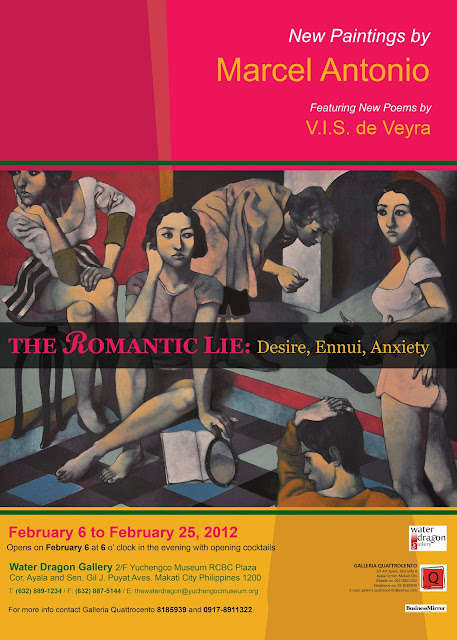The Philippines would be marking December 30, 2011, the 115th death anniversary of Dr. Jose Rizal. Jose Rizal’s full name was José Protasio Rizal Mercado y Alonso Realonda. He was known as a nationalist and the most prominent advocate for reform in the Philippines during the Spanish colonial era. Because of his beliefs and the changes he fought for, Rizal is considered the Philippines’ national hero. To celebrate Rizal Day, there are many festivals and parades to celebrate the man’s life and values. People observe this day to remember a man in the country’s history that has influenced the culture and values of the entire country.
Jun. 19, 1861 - Dec. 30, 1896
Doctor, Novelist, Filipino Patriot, Independence Movement Martyr
Here is the famous poem of Jose Rizal.
"My Last Farewell" (Mi Ultimo Adios)
Farewell, my adored Land, region of the sun caressed,
Pearl of the Orient Sea, our Eden lost,
With gladness I give you my Life, sad and repressed;
And were it more brilliant, more fresh and at its best,
I would still give it to you for your welfare at most.
On the fields of battle, in the fury of fight,
Others give you their lives without pain or hesitancy,
The place does not matter: cypress laurel, lily white,
Scaffold, open field, conflict or martyrdom's site,
It is the same if asked by home and Country.
I die as I see tints on the sky b'gin to show
And at last announce the day, after a gloomy night;
If you need a hue to dye your matutinal glow,
Pour my blood and at the right moment spread it so,
And gild it with a reflection of your nascent light!
My dreams, when scarcely a lad adolescent,
My dreams when already a youth, full of vigor to attain,
Were to see you, gem of the sea of the Orient,
Your dark eyes dry, smooth brow held to a high plane
Without frown, without wrinkles and of shame without stain.
My life's fancy, my ardent, passionate desire,
Hail! Cries out the soul to you, that will soon part from thee;
Hail! How sweet 'tis to fall that fullness you may acquire;
To die to give you life, 'neath your skies to expire,
And in your mystic land to sleep through eternity!
If over my tomb some day, you would see blow,
A simple humble flow'r amidst thick grasses,
Bring it up to your lips and kiss my soul so,
And under the cold tomb, I may feel on my brow,
Warmth of your breath, a whiff of your tenderness.
Let the moon with soft, gentle light me descry,
Let the dawn send forth its fleeting, brilliant light,
In murmurs grave allow the wind to sigh,
And should a bird descend on my cross and alight,
Let the bird intone a song of peace o'er my site.
Let the burning sun the raindrops vaporize
And with my clamor behind return pure to the sky;
Let a friend shed tears over my early demise;
And on quiet afternoons when one prays for me on high,
Pray too, oh, my Motherland, that in God may rest I.
Pray thee for all the hapless who have died,
For all those who unequalled torments have undergone;
For our poor mothers who in bitterness have cried;
For orphans, widows and captives to tortures were shied,
And pray too that you may see your own redemption.
And when the dark night wraps the cemet'ry
And only the dead to vigil there are left alone,
Don't disturb their repose, don't disturb the mystery:
If you hear the sounds of cittern or psaltery,
It is I, dear Country, who, a song t'you intone.
And when my grave by all is no more remembered,
With neither cross nor stone to mark its place,
Let it be plowed by man, with spade let it be scattered
And my ashes ere to nothingness are restored,
Let them turn to dust to cover your earthly space.
Then it doesn't matter that you should forget me:
Your atmosphere, your skies, your vales I'll sweep;
Vibrant and clear note to your ears I shall be:
Aroma, light, hues, murmur, song, moanings deep,
Constantly repeating the essence of the faith I keep.
My idolized Country, for whom I most gravely pine,
Dear Philippines, to my last goodbye, oh, harken
There I leave all: my parents, loves of mine,
I'll go where there are no slaves, tyrants or hangmen
Where faith does not kill and where God alone does reign.
Farewell, parents, brothers, beloved by me,
Friends of my childhood, in the home distressed;
Give thanks that now I rest from the wearisome day;
Farewell, sweet stranger, my friend, who brightened my way;
Farewell, to all I love. To die is to rest.
(His friend Mariano Ponce gave it the title of MI ULTIMO ADIOS, as it originally had none)
Rizal's Famous Quotations
"Ang hindi magmahal sa sariling wika, daig pa ang hayop at malansang isda."
"He who does not love his own language is worse than an animal and smelly fish."
"Ang hindi marunong lumingon sa pinangalingan ay hindi makakarating sa paroroonan."
"He who does not know how to look back at where he came from will never get to his destination."
"It is a useless life that is not consecrated to a great ideal. It is like a stone wasted on the field without becoming a part of any edifice."
"While a people preserves its language; it preserves the marks of liberty."
"There can be no tyrants where there are no slaves."
"The youth is the hope of our future."




















